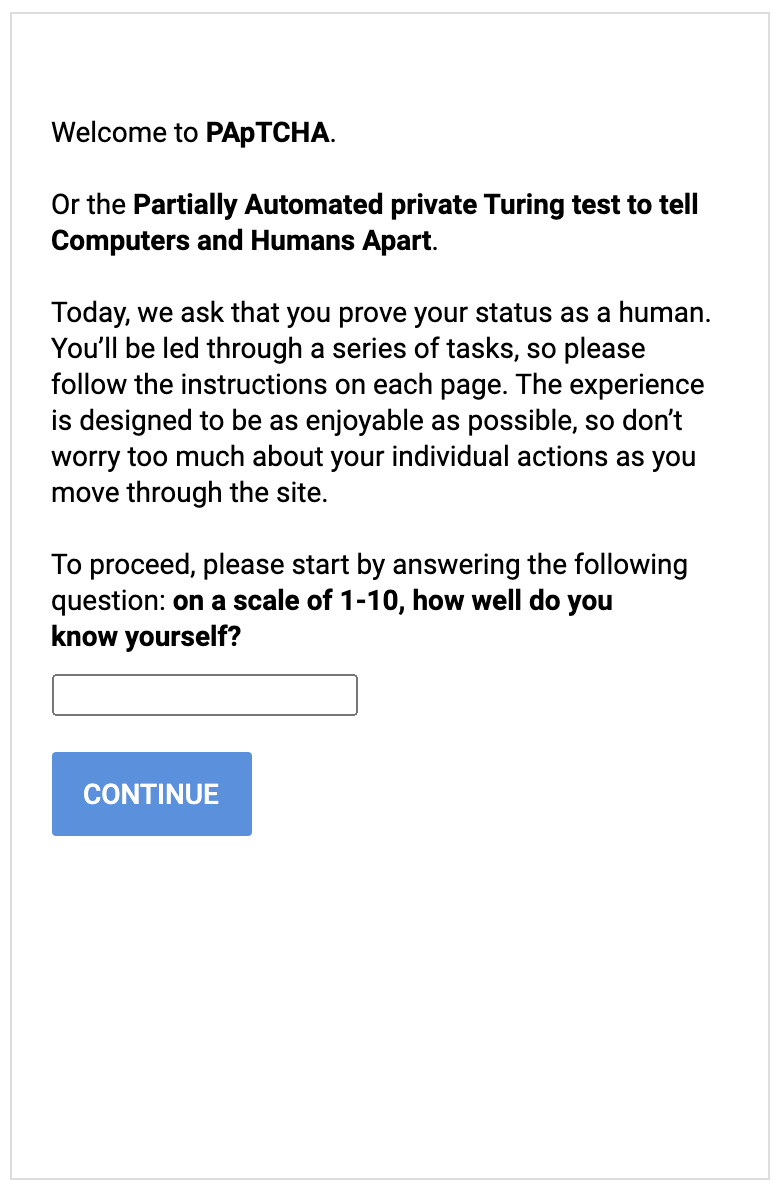PApTCHA
︎︎︎︎︎︎ click there
Project created in collaboration with Qianxun Chen.
PApTCHA, or: Partially Automated private Turing test to tell Computers and Humans Apart, takes the design elements from Google’s popular reCAPTCHA test (the Completely Automated Public Turing Test to tell Computers and Humans Apart) and turns it into a main-menu-meets-landing page for the collection language artworks featured in the piece. Specifically, viewers visit these pieces by clicking on the individual squares in the PApTCHA interface. Once inside a page, viewers encounter a term or phrase that is commonly used in digital privacy contexts online. Some of these include: “accept,” “agree,” “allow,” “block,” “continue,” “do not sell,” “do not track,” “I understand,” “your presence on this site,” and “was this information helpful?”
The theoretical foundation for PApTCHA begins with a process of decontextualization into re-contextualization. By pairing UI terms with their IRL linguistic counterparts, the project engages in a critique of digital privacy settings. In doing so, PApTCHA aims to expose the ways users opt to forgo a certain level of privacy in order to visit their preferred sites and to have uninterrupted experiences online and to undercut the notion that one has agency or choice when “managing” these settings.
Featured in The Language Art Observer.
Presented at PrivacyWeek 2021.
